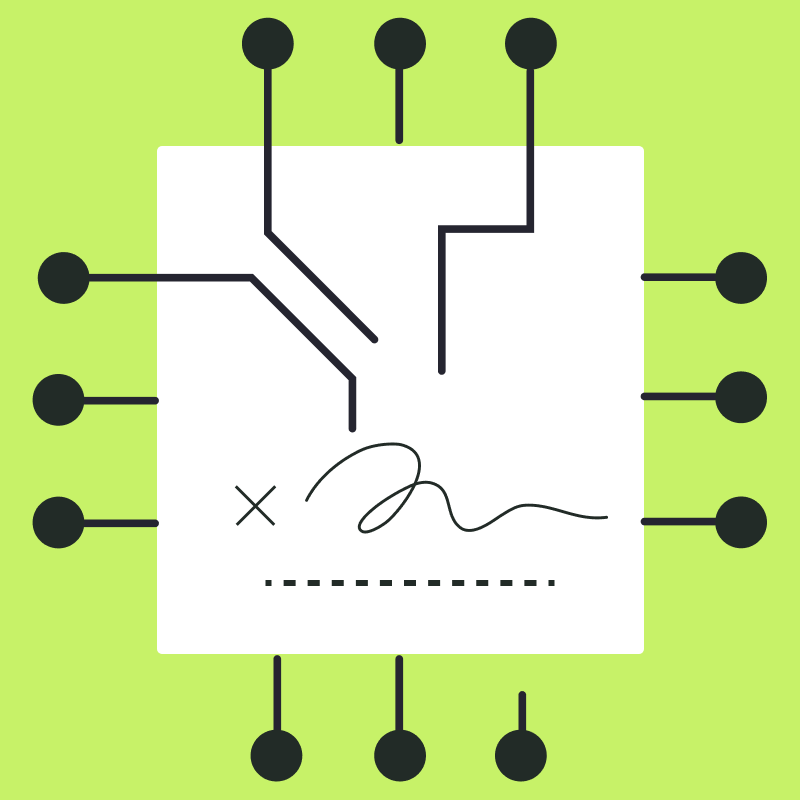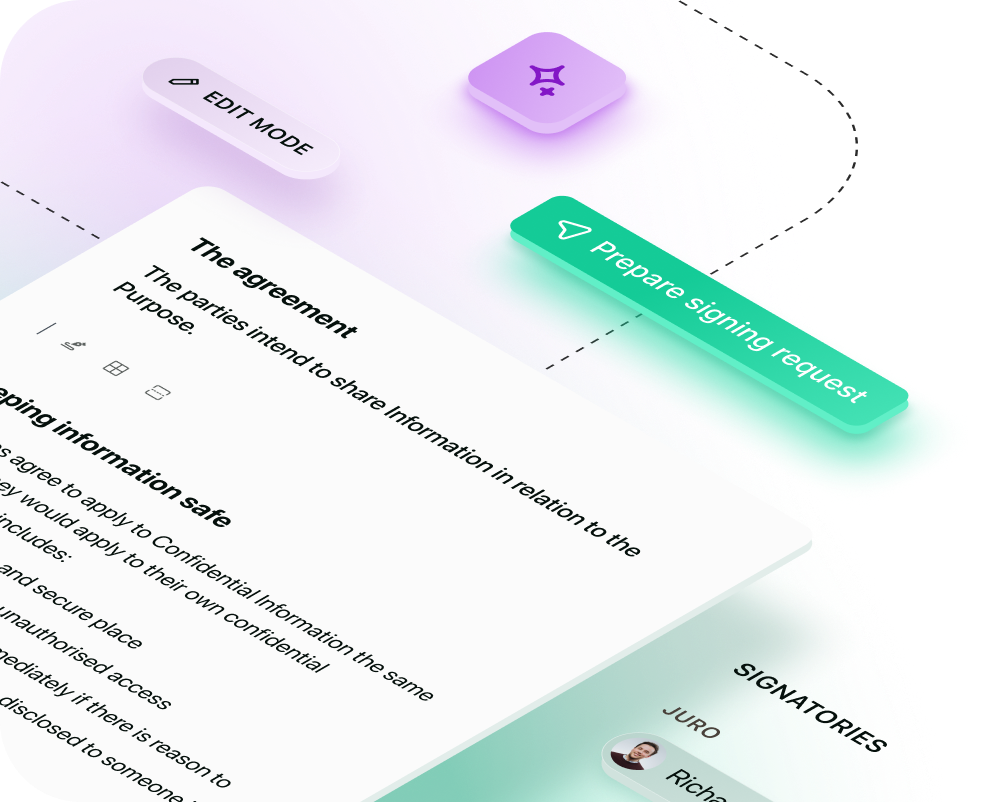Solutions
Customer Support
Resources


The pressure on legal teams is consistent: review more contracts, at higher speed, with less resource.
Most of those contracts aren’t complex. They’re high-volume, low-risk documents like NDAs, DPAs, and SLAs. But they still take time.
ChatGPT can help. Used correctly, it can take on the first pass of a contract review, flag risks, and reduce the volume of routine queries coming into legal. But to use it well, you need a clear framework. This guide breaks that down.
First thing’s first. Can you review contracts with ChatGPT? And more importantly, if you can, should you?
You can use ChatGPT to review contracts – but there are important caveats. ChatGPT can read, summarise, and even suggest changes to contract language. But the extent to which it’s safe or useful to do so depends on how you use it, and where.
For instance, our recent survey of 160+ in-house lawyers revealed that 58 per cent were already leveraging AI for contract review tasks, usually with a focus on first-pass review, summaries, risk spotting and clause identification.
But fewer were confident in AI’s ability to redline contracts, which is the most nuanced and business-critical part of contract review.
Why? Redlining requires deep contextual understanding: your company’s risk tolerance, negotiation strategy, fallback clauses, and commercial priorities. General purpose tools like ChatGPT lack this embedded knowledge and cannot reliably replace a lawyer’s judgment.
Throughout this guide, we’ll unpack the key challenges that hold back even the most forward-thinking lawyers from using AI for redlining and contract review. Then, we’ll introduce a better, more secure, and more reliable alternative to ChatGPT for contract review—one designed specifically for legal teams who need precision, control, and compliance.
Not all contracts — or contract reviews — are appropriate for AI. Before you start, define your goal. Are you trying to reduce legal review time, identify missing terms, create a plain-English summary for stakeholders, or compare against standard terms?
ChatGPT will only be as accurate and useful as the input you give it. So treat prompt prep like document prep.
If you're using the public version of ChatGPT (even with a paid account), don't upload contracts with personal data, commercial terms, or company identifiers. Use placeholders:

The need to redact this information can inevitably complicate the contract review process, particularly when the values you’re redacting form the basis of what requires review. For example, if you're reviewing a limitation of liability clause that states liability is capped at “£100,000,” redacting that number to [$Fee] strips the clause of the very detail you need to assess its acceptability.
You can’t evaluate whether the cap aligns with your risk appetite, revenue, or standard fallback without knowing the value. This forces you to either make assumptions or separately track redacted data — both of which introduce risk and inefficiency into the review process.
That’s why using a secure AI-native CLM like Juro is often preferred. Since Juro doesn’t use customer data to train foundational models, removing this data isn’t necessary in a platform like ours. You can get started with contract review immediately, with all of the right contract permissions in place.
To find out more about Juro's AI review agent, hit the button below.
Juro embeds contracting in the tools business teams use every day, so they can agree and manage contracts end-to-end - while legal stays in control.

ChatGPT can only flag deviations if you tell it what “good” looks like. Keep a copy of your fallback clauses, negotiation guardrails or playbook language handy. Example:
Indemnity fallback: “Each party’s total aggregate liability is limited to 100% of fees paid in the previous 12 months. Neither party is liable for indirect or consequential damages.”
While you can use the projects function in ChatGPT to make these prompts templated and avoid repetition, it’s far more efficient and effective to craft and implement a robust contract playbook that captures this logic and reasoning instead.
To get reliable outputs from ChatGPT, you need to understand how to frame legal questions clearly and precisely. This means moving beyond basic commands and learning how to shape prompts that include the right context, constraints, and expected outcomes.
Well-structured prompts should:

Investing time in training legal and business teams on how to write effective prompts can dramatically improve the accuracy and usefulness of AI outputs. Even better if those prompts are standardised and built into your playbook or review templates.
Ready to upskill in prompt engineering? You can catch up with our recorded session of AI for lawyers: prompt engineering 101 here.
Treat ChatGPT as an assistant, not a decision-maker. While it can speed up the first pass of contract review, AI-generated outputs should never be used in isolation — especially for contracts with material risk or legal complexity.
Always have a qualified lawyer review the analysis before approving, finalising, or negotiating contract language. This is critical not just for legal accuracy, but also for context: AI won’t understand the nuances of your business model, regulatory obligations, or prior negotiation history.
Think of legal AI as a time-saver for repetitive, low-value tasks — not a substitute for legal judgment.
Below are sample prompts that legal and business teams can adapt for different review goals. Each is designed to be practical, specific, and easy to repurpose.
“Review this contract and flag any clauses that could expose [Company A] to legal, commercial, or financial risk, based on the contract playbook and guardrails previously submitted. Summarize each flagged clause with a 1–2 sentence explanation and suggested mitigation if applicable.”
“Scan the contract and highlight any missing standard clauses typically included in UK commercial contracts, such as governing law, termination, limitation of liability, confidentiality, or dispute resolution. List any absences with an explanation of why they matter.”
“Summarize the obligations and risks in this contract for a non-legal stakeholder. Group them under: (1) commercial obligations, (2) legal obligations, (3) potential risks. Keep the language concise and avoid legal jargon.”
Yes. There are several lightly branded GPTs available on OpenAI’s GPT Store, with names like “Contract Review Assistant,” “Legal Advisor for Contract Review,” “Contract Navigator,” and so on.
These tools let you upload or paste contract text and receive contract summaries, risk flags, compliance checks, and next-step suggestions. However, the quality and capability vary, and they often act as “GPT-enhanced assistants” rather than full CLM integrations.
Plus, they lack the wider context that lives within your contract portfolio. With Juro you can have the agility and sheer power of AI agents, plus the peace of mind that comes from an underlying system of record.
That’s why teams like yours are opting to review their contracts in Juro, rather than in a general purpose AI solution like ChatGPT.
While ChatGPT’s projects and prompt templates can help reduce repetitive tasks, they fall short when it comes to managing complex or high-volume contract workflows. The challenge is scale, consistency, and context — all critical for effective legal risk management.
Even with ChatGPT prompt examples and tips on legal prompt engineering, you can’t escape the fact that these requests need to be repeated manually each and every time.
That’s where an AI-powered contract playbook embedded within a platform like Juro transforms the process:

By embedding your legal playbook directly into the AI review process, Juro bridges the gap between generalist language models and the complex realities of commercial contracting. This delivers faster, safer, and more predictable contract review — a large step beyond what standalone ChatGPT can offer.
To find out more about how it works, fill in the form below.

Sofia Tyson is the Senior Content Manager at Juro, where she has spent years as a legal content strategist and writer, specializing in legal tech and contract management.
Sofia has a Bachelor of Laws (LLB) from the University of Leeds School of Law where she studied the intersection of law and technology in detail and received the Hughes Discretionary Award for outstanding performance. Following her degree, Sofia's legal research on GDPR consent requirements was published in established law journals and hosted on HeinOnline, and she has spent the last five years researching and writing about contract processes and technology.
Before joining Juro, Sofia gained hands-on experience through short work placements at leading international law firms, including Allen & Overy. She also completed the Sutton Trust’s Pathways to Law and Pathways to Law Plus programs over the course of five years, building a deep understanding of the legal landscape and completing pro-bono legal volunteering.
Sofia is passionate about making the legal profession more accessible, and she has appeared in several publications discussing alternative legal careers.

Juro embeds contracting in the tools business teams use every day, so they can agree and manage contracts end-to-end - while legal stays in control.
Book your demo